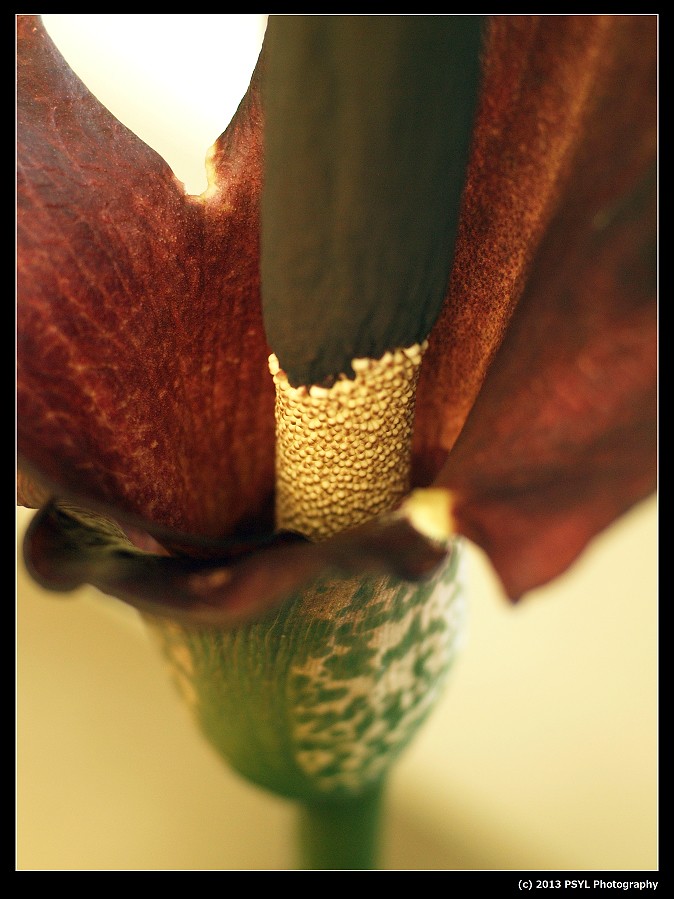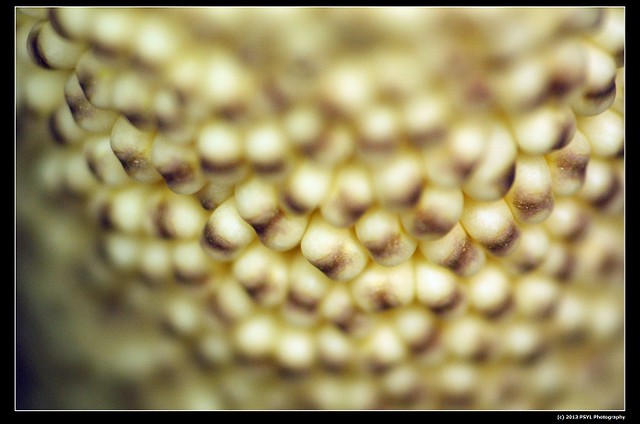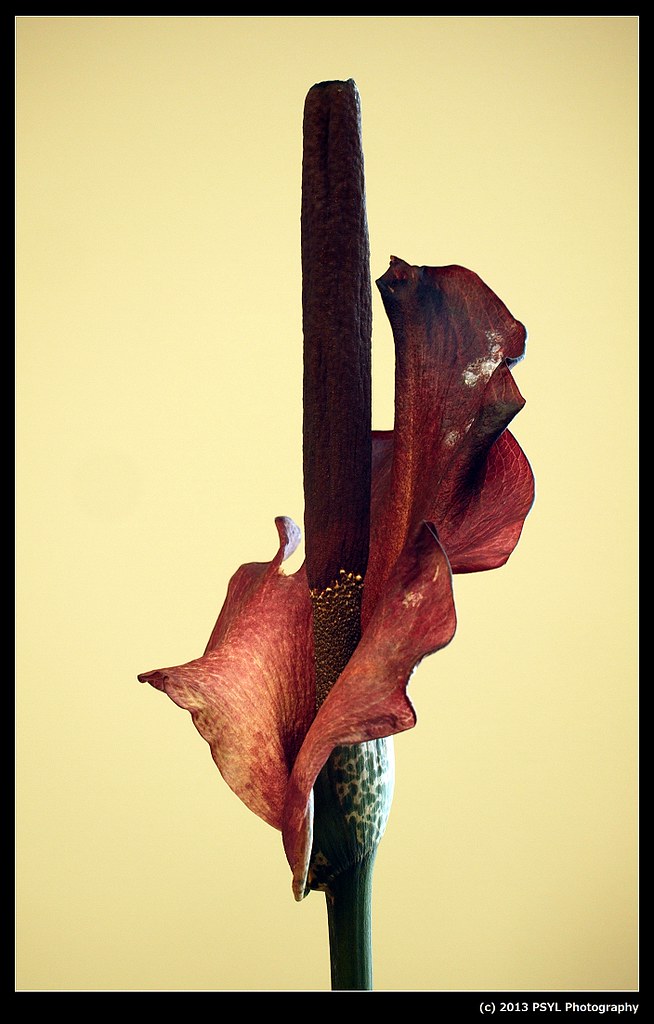The inflorescence, like many species in the genus Amorphophallus, emits an unpleasant odor that attracts pollinators (although I seem to have a strange sense of smell which doesn't bother me at all).
The inflorescence when it first arrived on Monday. It consisted of the spadix (flower spike) enclosed by a spathe (a sheathing bract). The tip of the spadix broke off during transportation.
The inflorescence on Tuesday.
Peering into the spadix where you can see tiny male flowers.
Each bump is apparently a male flower. The female flowers are towards the bottom of the spadix, which are harder to see at that moment.
Two more days later, the spathe opened more (with some gentle reinforcement from us).
The male flowers, which seems mature and ready to give off pollen. We then took some cotton swabs and tried to pollinate the females flowers ourselves.
This is what the female flowers look like (photo taken today). I wonder if us acting as pollinators had worked or not, because you can definitely see some pollen on the stigmas of the flowers.







No comments:
Post a Comment